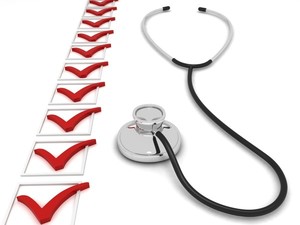In the European Union (EU) and other highly regulated markets, companies need to prove the similarity of proposed biosimilars to the established reference product for gaining market authorization. European regulators recommend using a stepwise approach whose first steps consist of a demonstration of similarity at the analytical level and via non-clinical studies. In addition, as a later step, clinical studies are an important source of additional evidence.
EMA continues to be open to alternative clinical development strategies for biosimilars
Biosimilars/Research
|
Posted 18/01/2019
 0
Post your comment
0
Post your comment

In the past years, the European Medicines Agency (EMA) has published several guidelines to assist sponsors with questions regarding development strategies for biosimilars. However, systematic information on how companies interpret these guidelines and put them into practice is still sparse. The aim of this research [1] was to systematically compare clinical biosimilar development strategies that are used in practice, with a focus on products which were approved after August 2016. Information on earlier approved biosimilars can be found elsewhere [2]. The main resource for this project were European public assessment reports (EPARs), which are publicly available online [3].
In the first step of the research, the regulatory guidelines (overarching guidelines and product-specific guidelines) were compared to the development programmes of approved biosimilars. It was found that, even in cases where product-specific guidelines were available, these were not necessarily followed. Interestingly, companies did not always seem to plan to use as few resources as possible, but sometimes also provided more clinical evidence than explicitly required in the product specific guidelines, e.g. insulin biosimilars. On the other hand, cases were identified where companies provided substantially less information than expected, e.g. enoxaparin biosimilars. In the latter case, the product-specific guideline was adjusted after the approval of the proposed biosimilar, indicating that regulators are in principle open to alternative development strategies, as long as these strategies are scientifically sound.
In addition to the described deviations from regulatory guidelines, there was found to be high heterogeneity between development programmes for biosimilars. This has been previously described [2] and was confirmed in more recent biosimilar approvals. Interestingly, this heterogeneity also occurred for biosimilars with identical reference products, e.g. in cases where there is no clinical reason for differences in development strategies. For example, the study population for etanercept biosimilars was either rheumatoid arthritis or psoriasis. According to publicly available information, EMA preferred rheumatoid arthritis, but accepted psoriasis nonetheless.
The aim of a therapeutic equivalence clinical trial in biosimilar development is to establish comparable safety and efficacy to the reference product. For that, it is necessary to quantify the meaning of ‘comparable’, i.e. to define the so-called equivalence margin prior to the study. This value represents the difference between the biosimilar and its reference product that is negligible from a clinical point of view. It was shown that, while the equivalence margins were in most cases defineda priori, the scientific justification of the equivalence margin was often lacking, at least in the publicly available documents.
In terms of statistical methodology, it was noted that recently more complex study designs, e.g. switching designs, and advanced analysis approaches, e.g. sequential designs, were used. The coming years will show if any of these innovative concepts will establish themselves as the standard in biosimilar development.
In conclusion, biosimilar development strategies continue to be highly heterogeneous. Companies that aim to deviate from regulatory guidelines may use the scientific advice procedure of EMA. Experience from the past showed that these deviations might be accepted if they can be scientifically justified.
Conflict of interest
The authors of the research paper [1] declared that there was no conflict of interest.
Abstracted by Johanna Mielke, Statistical Methodology, Novartis Pharma, Basel, Switzerland.
Editor’s comment
Readers interested to learn more about biosimilars development are invited to visit www.gabi-journal.net to view the following manuscript published in GaBI Journal:
Alternative statistical strategies for biosimilar drug development
GaBI Journal is indexed in Embase, Scopus, Emerging Sources Citation Index and more.
Readers interested in contributing a research or perspective paper to GaBI Journal – an independent, peer reviewed academic journal – please send us your submission here.
Related article
EMA responds to questions over biosimilar comparability
References
1. Mielke J, Jilma B, Jones B, Koenig F. An update on the clinical evidence that supports biosimilar approvals in Europe. Br J Clin Pharmacol. 2018;84(7):1415-31.
2. Mielke J, Jilma B, Koenig F, Jones B. Clinical trials for authorized biosimilars in the European Union: a systematic review. Br J Clin Pharmacol. 2016;82(6):1444-57.
3. European Medicines Agency. European public assessment reports [homepage on the Internet]. [cited 2019 Jan 18]. Available from: www.ema.europa.eu/en/medicines/download-medicine-data#european-public-assessment-reports-(epar)-section
Permission granted to reproduce for personal and non-commercial use only. All other reproduction, copy or reprinting of all or part of any ‘Content’ found on this website is strictly prohibited without the prior consent of the publisher. Contact the publisher to obtain permission before redistributing.
Copyright – Unless otherwise stated all contents of this website are © 2019 Pro Pharma Communications International. All Rights Reserved.
General
Samsung Bioepis wins Pyzchiva case; Regeneron patent rulings threaten foreign biosimilars
Chinese biosimilars go global: growth, partnerships, and challenges
What is the future for the US biosimilar interchangeability designation

Biosimilars/Research Posted 05/06/2025
Biosimilar clinical efficacy studies: are they still necessary?

Biosimilars/Research Posted 27/05/2025
The best selling biotechnology drugs of 2008: the next biosimilars targets








Post your comment